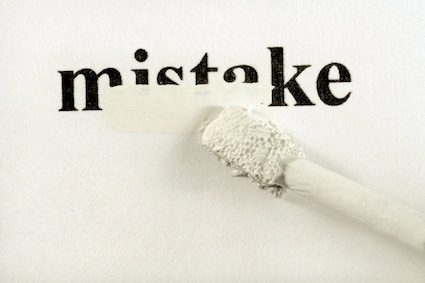
Effective Website Design: Common Mistakes to Avoid
 Having a user-friendly website is vital if you want visitors to stay on your site. If people don’t find what they’re looking for within a matter of seconds, you will lose them and potential sales. Even some professional website designers make fundamental design mistakes that devalue a website. If you want an effective website that positively supports the company or individual, there are some basic design mistakes you must avoid.
Having a user-friendly website is vital if you want visitors to stay on your site. If people don’t find what they’re looking for within a matter of seconds, you will lose them and potential sales. Even some professional website designers make fundamental design mistakes that devalue a website. If you want an effective website that positively supports the company or individual, there are some basic design mistakes you must avoid.
Lack of Clarity
Just because the website looks good to you, it doesn’t mean it will look good to every visitor to the site. If visitors can’t figure out what the website is about in a few seconds, your website design is fundamentally flawed. Think about the basic mission of the website and make it obvious on the home page.
The Wrong Color Scheme
One of the key elements in design clarity is the use of color. Colors can instantly tell the viewer more about the company than even the company name, the text, and the images. Use your common sense. If you use a color scheme of yellow, pink and red for a legal or financial company, you probably need a holiday. However, if the design is for a nursery school, it might be just the ticket.
Text Abuse
When it comes to the use of text on the page, bad designers have an array of blunders to choose from. Floating headers are headers that don’t seem to belong to any body of text. Make sure the related text closely follows the header. Don’t use Flash or graphics for text. It should be a comfortable experience for the reader. Keep it simple. Fancy fonts can also detract from the important message you want to convey. And underlining normal text often looks cheap and unprofessional. (People also wrongly assume that its a link.) Using capitals is another no-no which also wastes space. Try using bold type or a consistent rich color to emphasize pieces of text.
Spatial Pollution
Perhaps one of the most annoying crimes against design is the overuse of space on a web page. You don’t have to fill one page with all the material. Plan the site properly by organizing the information into relevant categories. Large blocks of text or a mass of garish images will only confuse the visitor and theyll probably leave the website before they even know what is actually on offer.
Mystery Navigation
The last thing you want to do is make it confusing for the visitor to get around the website. If they can’t find what they’re looking for, theyll go somewhere else to find it. Use a consistent and simple navigation system. Different types of navigational hyperlinks on the same page are just confusing. Having a home page link on the home page is also misleading. Use worded links for primary and secondary navigation, and position them at the top or left hand side of the page (for English language websites). Drop-down menus simply hide the information a visitor wants to see and are probably best avoided.
Fatal Distractions
Unless you need to host advertising banners that have animation, avoid using animated GIFs. They stop the viewer focusing on the important information. Similarly, the overuse of Flash can be a frustrating distraction and increases the time it takes the website to load. Blending advertising into the page content may also seem like a worthwhile plan in the short-term, but you may ultimately lose (annoyed) visitors in the long run. The same goes for color contrast. If visitors can’t read the text properly because of poor contrast, they will quickly leave the site before they get permanent eye damage.
Bad Grammar
Always read the text content of the page several times before a website goes live. Spelling mistakes and grammatical errors make the site look amateurish and will annoy a large proportion of visitors. If you’re unsure, get someone else to read it. Fixing these simple mistakes early on in the website design process will help you to avoid future embarrassment.
There are numerous ways to make a website more user-friendly, and probably even more ways to make design mistakes.
To create a more intuitive, accessible, and effective website, just remember the audience. If the target audience finds the website attractive and informative, your website design is probably a success.